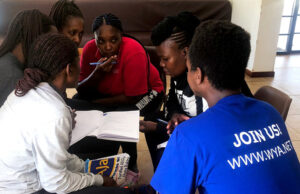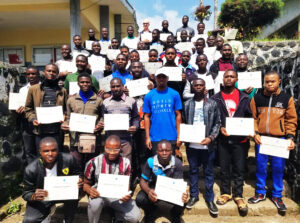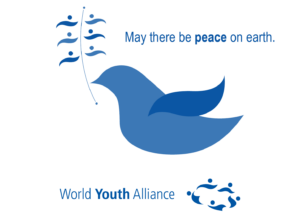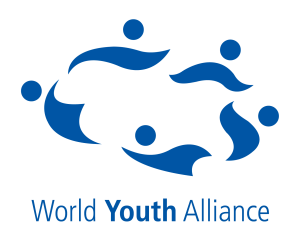
How come, someone with such a technical background in Health, had found her way to the World Youth Alliance? How did subjects like Microbiology, Parasitology, Clinical Chemistry, and Anatomy could have possibly led to George Weigel, Viktor Frankl, Mahatma Gandhi, and Josef Pieper? Am I lost in translation or simply looking at a different model of the same specimen?
It all began when I was a junior in college taking up a degree in Public Health. Like probably any junior anywhere in the world, I was knee-deep in my coursework and was looking for a way to escape my routine by doing something fun for once. This was when I stumbled upon WYA Asia Pacific’s post on Summer Camp applications. Right then and there, I thought, “Why not?”
All set and ready to unwind at the beach, I suddenly found myself with a 400-page manual containing literature, philosophical texts, and on top of it all, a certification exam/interview in just 5 days. I realized that the Certified Training Program (CTP) Manual was just as thick as my Anatomy Textbook. I made it this far along in college, so how hard could it be? Right then and there I should have seen all the signs that this was all going to backfire, and it did.
Page after page, words flooded my brain. The manual contained a compilation of different authors tackling Philosophy, History, Social and Policy-related documents that supported the ideas of WYA by establishing a picture of who man was to himself, to other beings and in society. Needless to say, I was a fish out of the water.
For one, when asked to indicate the location of the Biceps in Anatomy, it would usually go like:
The Biceps Brachii is a double-headed muscle of the upper arm with the long head originating from the Supraglenoid Tubercle and the short head from the Coracoid Process of the Scapula; with distal attachments on the Radial Tuberosity.
Although a bit intimidating, it gives you a clear picture of where it is located by using tangible landmarks to describe it. But, all of a sudden, I encounter questions in the CTP like:
Why would political ideologies take an interest in the creation of art? What can be the effects of this relationship with art? What effect does this relationship have on man?
I felt a certain displacement with the direction my mind was being pointed to. Why was my mind struggling to even understand the simplest relationships of objective and subjective values? Philosophy was always fun yet a definite brain-twister.
When it struck me that all of these chapters and discussions were all about human beings, I wondered why I can’t grasp the concepts we were talking about when that was what I exactly study in school. I have studied cells, muscles, microbes, parasites and even holes in bones, but why do I feel lost in the picture of the entirety of the human being?


[su_spacer size=”10″]
Amidst the confusion, I started to see what I was doing wrong, I was looking at the texts in the CTP like it was just one of our reference books in school. My mind was trying to memorize concepts like they were Cranial Nerves rather than understanding how they apply in real life. I was trying to justify what humanity was, through biological markers brought about by evolution but sometimes, it is important to see humans as more than just anatomical figures. Knowing what a human is made out of doesn’t necessarily mean understanding what it takes and means to be human. What the Certified Training Program taught me is that there is more to humanity than the structures I study and one way to see that is to every now and then look up from my books, get up and experience life. And that is exactly what I did.
Through the CTP, people from different walks of life can discuss the commonality of Human Dignity, Freedom, Solidarity, Culture and the importance of family. Nowadays, we live in a world where all people can do is disagree. However, it gave me hope that there lie universal truths that connect us to each other. By finishing the training program, I got a changed perspective on how life matters. It doesn’t revolve around social media or the nitty-gritty details of an academic text, but it is through the people you meet, the experiences you had and the questions you tried finding the answers to. Viktor Frankl said that he who has a ‘why’ to live can bear with almost any ‘how’. With this, let me ask you, what is your why to live?
Written by Jenn Margarette Bordon, a current WYA Headquarters’ intern from the Philippines.







